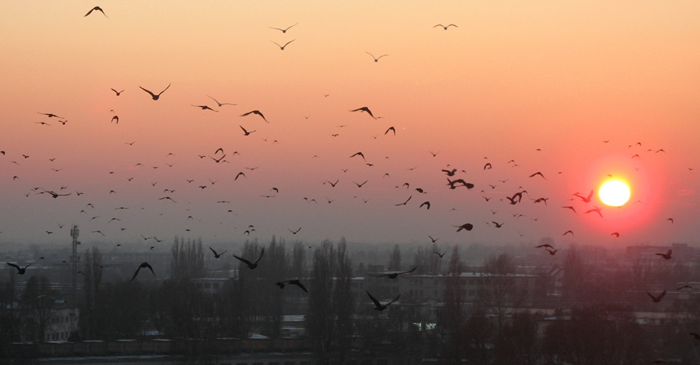The Atlantic Flyway Migration is an annual phenomenon that involves the movement of numerous bird species along the eastern coast of North America. This migration occurs twice yearly—in the spring and fall—as birds move to and from their breeding and wintering grounds.
The Atlantic Flyway is one of North America's four primary migratory bird flyways. It stretches approximately 3,000 miles (4,800 kilometers) from its northernmost point to its southernmost point. The migratory journey along the Atlantic Flyway map typically commences in Greenland before tracing a route down the eastern coastline of Canada and the United States, ultimately reaching the sun-kissed tropical regions of South America and the Caribbean.
During the Atlantic Flyway Migration, birds travel in flocks or V-formations to navigate their way along this route. This can involve quick bursts of flight broken up with periods of rest on land or water. Some species will complete the entire journey, while others will stop to breed and feed along the way.
Timing of the Migration
During the spring migration, which typically occurs from March to June, birds in the Atlantic Flyway begin to move northward from their wintering grounds in the southern United States, Central America, and the Caribbean. As they move north, they follow the greening of the landscape and the emergence of insects, which provide them with food.
As for the fall flyway migration, which starts in late summer and continues through the fall months, the exact timing can vary depending on the species and their breeding location. Generally, birds start their southward journey in August and September. However, some species may start their migration as early as July or as late as October. The migration generally continues until November or early December, though some species may migrate later in the season.
During this time, birds in the Atlantic Flyway begin to move southward in order to escape the colder temperatures of the north. Many of these birds travel thousands of miles to reach their wintering grounds, which can be as far away as South America.
Throughout this migration, birds rely on cues such as changing day length and weather patterns to know when it's time to start their journey. It's important to note that not all bird species migrate the same distances, nor do they all follow the exact same route. Each species has its own unique set of migration patterns.
The Atlantic Flyway and Key Stopover Points
The Atlantic Flyway Migration is an impressive journey that involves over 500 bird species. Along this route, there are many important stopover points where birds can rest and refuel before continuing their migration. These key stopover points serve a critical function in the success of the migration.
Some of the key locations along the Atlantic Flyway provide important refuge and resources for birds. These areas include coastal wetlands, estuarine habitats, barrier islands, and mountain ridges. Many of these locations are part of federally protected wildlife refuges or state parks specifically designed to conserve the habitats that birds need in order to succeed during their migration.
Typically, the Atlantic flyway map covers the following states:
- Alabama
- Connecticut
- Delaware
- Florida
- Georgia
- Kentucky
- Louisiana
- Maine
- Maryland
- Massachusetts
- Michigan
- Mississippi
- New Hampshire
- New Jersey
- New York
- North Carolina
- Ohio
- Pennsylvania
- Rhode Island
- South Carolina
- Tennessee
- Vermont
- Virginia and West Virginia
Within these states, there are a variety of different habitats that serve as crucial stopover sites for birds migrating along the Atlantic Flyway. Some of the more popular locations include Cape May, Delaware Bay, Chesapeake Bay, and Great Smoky Mountains National Park.
Factors Driving the Migration
The migration is driven by a combination of factors, including changes in daylight hours, food availability, and weather patterns. Many bird species rely on specific habitats along the flyway, such as coastal marshes, forests, and grasslands, for resting and refueling during their journey.
The Atlantic Flyway Migration is an important event for both the birds and the ecosystems they traverse. It plays a critical role in maintaining biodiversity and ecosystem health, and it provides opportunities for birdwatchers and nature enthusiasts to observe and appreciate the beauty and wonder of the natural world.
How Can You Help?
The Atlantic Flyway Migration is an incredible event that is threatened by a variety of human-induced impacts such as habitat destruction, climate change, and light pollution. You can help protect the birds and their habitats by taking action to preserve important stopover sites along the flyway.
By becoming involved in local conservation efforts like putting food out for birds, planting bird-friendly native plants, and participating in local cleanups, you can help ensure the health and longevity of the birds traveling through your area. Additionally, you can spread awareness by sharing stories about the amazing journey of these migrating birds with family and friends.
The Atlantic Flyway is a critical part of our ecological system that needs to be protected. By becoming a part of the solution, you can help give birds the resources they need to keep soaring.
Lyric Bird Food is committed to providing healthy, nutritious birdseed specifically designed for birds migrating along the Atlantic flyway. Lyric Fruit & Nut Mix is a delectable combination of energy-packed seeds, nuts, and fruit pieces that will entice a wide range of vibrant feathered guests from across the globe.
Grab your bag of Lyric Fruit & Nut mix and join the chorus of birdsong along the Atlantic Flyway Migration!
